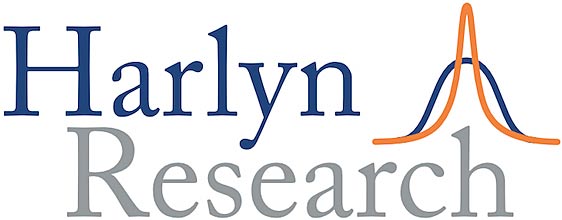Our flagship product, called Synopsis, is published every two weeks. It uses the data generated by our process to address whatever we think are the most important issues in global investing at the time.
All our notes are tagged thematically, so feel free to click on any of the topics and explore what we have written.
Under UK regulations, our research is only available to professional clients and eligible counterparties; they are not available to retail (investment) clients. Harlyn Research is not registered as an investment advisor with the SEC and therefore any information about our investment products or services is not directed at nor intended for US investors.
Lower for Longer
Friday, June 24th, 2022New worst-case scenario for US Equities
We have cut our reasonable worst-case estimate of where the S&P500 may bottom from 3,400 to 3,000. This follows on from our last note which argued that current consensus earnings were likely to drop by at least 15% before hitting their trough sometime in 2023. Our new target implies a forward pe ratio of about 15x, which is slightly lower than the median for this century. As consensus forecasts are reduced, we expect the earnings mix to move away from highly-valued sectors like Tech and Consumer Discretionary towards lowly-valued sectors like Energy and Materials. The other reason for our new target is that nobody has any profits from other investments which they can reinvest into equities. US 7-10 Treasuries are down by about 17% since the equity market peaked, compared with gains of about 10% at the equivalent stage of the bear markets in 2001 and 2008.
PURCHASE ALL ACCESS PASS
Already hold an All Access Pass? LOG IN
How Earnings Recessions Behave
Friday, June 10th, 2022Consensus estimates aren’t reliable in a bear market
Bear markets can make the most rational of investment approaches look pretty stupid. Any concept of fair value based on consensus estimates can be downright dangerous. The typical delay between the peak in the index and the peak in estimates is more than 30 weeks, so we should not expect the consensus to start cutting until late August. The typical drawdown in 12-month forward estimates lasts between 115 and 170 weeks. So, the estimates you are using for 2022/23 may also be the numbers for 2025/26.
PURCHASE ALL ACCESS PASS
Already hold an All Access Pass? LOG IN
Normality Reasserts Itself
Friday, May 27th, 2022Monetary policy distorted the mechanics of risk and return
The huge monetary interventions during the pandemic in the US and other countries were designed to protect equities from a surge in economic and financial risk. They succeeded, but at the cost of distorting the normal relationship between risk and return: specifically, the excess volatility vs the excess return of equities vs bonds. This is now reverting back to normal. As the volatility of equities rises relative to the volatility of bonds – and this figure is well below its long-run average, let alone its potential peak - their return relative to bonds must decline. The only developed market which may escape the worst of this adjustment is Switzerland.
PURCHASE ALL ACCESS PASS
Already hold an All Access Pass? LOG IN
Something Is Going to Break
Friday, May 13th, 2022Volatility has entered the danger zone.
Realised volatility continues to march higher every week and we have now got to the danger zone, where this creates the conditions for more volatility - especially if the FOMC is committed to much tighter monetary policy. In these circumstances, traditional valuation metrics lose a lot of their power and investors should assume that markets in one or more major asset classes will become disorderly. We think this has already begun in Nasdaq, Italian government bonds and the Chinese yuan. Other assets, which may follow in due course, include US High Yield, credit ETF’s and US housing.
PURCHASE ALL ACCESS PASS
Already hold an All Access Pass? LOG IN
Go Direct
Friday, April 29th, 2022Compare equity sectors against Treasuries, not other equities
We think US equities as an asset class are going to struggle against US Treasuries over the next few weeks, partly because bonds have already priced in a lot of bad news, and partly because earnings estimates for 2022 and 2023 are too high. It may take investors some time to realise this, so positioning within equities or between equites and bonds may give rise to significant timing difficulties. However, our models are really clear about the relationship between Treasuries and some sectors, like Energy. There are at least four of these sectors now and this number could rise to eight. Investors may find that using this direct approach, comparing equities against Treasuries, rather than other equities, helps to clarify their thinking.
PURCHASE ALL ACCESS PASS
Already hold an All Access Pass? LOG IN
What’s Working Now
Thursday, April 14th, 2022Our equity sector models do well when markets are under stress
Asset allocation is difficult at the moment, with bonds and equities falling in tandem in Q1. We are in favour of broader diversification strategies including other asset classes, but they should not be the result of hasty decisions after a bad quarter. All of our equity sector models have produced excess returns in the year to date and have a history of doing well when markets are under stress. Their best year for excess returns was 2020, during the first wave of the pandemic, and so far, 2022 is shaping up to be another good year.
PURCHASE ALL ACCESS PASS
Already hold an All Access Pass? LOG IN
Back to the 1870’s
Friday, April 1st, 2022150 years of beating the benchmark
We have recently achieved one of our most cherished ambitions – to test our process against a truly long-run data set and see if it works. The answer is a very definite yes. Our standard process beats US equities, US Treasuries - and any fixed combination of these two - on all of the three most important tests: highest absolute return, most risk-efficient return and smallest drawdown. The test covers 150 years, including two world wars and multiple bear markets. The outlook for the world is impossible to forecast at the moment, so we find it very comforting that a systematic data-driven approach can do so well
PURCHASE ALL ACCESS PASS
Already hold an All Access Pass? LOG IN
Discontinuity Rules
Friday, March 18th, 2022A lot has changed but not everything that should have
If the fall of the Berlin Wall was supposed to be the end of history, the invasion of Ukraine may well mark the rebirth of geography in investment markets. Equity returns in Europe are being impacted by country specific factors beyond the usual mix of sector effects. We see the potential for new definitions of core and periphery in Eurozone bond markets and there are many emerging equity markets in Latin America and SE Asia which are not affected by the war, even the asset class as a whole is (China, Russia, Eastern Europe). The thing which hasn’t changed is the momentum of US earnings growth.
PURCHASE ALL ACCESS PASS
Already hold an All Access Pass? LOG IN
Should We Be Worried?
Friday, February 18th, 2022Investors need to price the risk of recession in 2023
A recession in 2023 is not our central case, but investors ought to price the risk of it happening, in order to reduce the probability that it will. We would be surprised if the Federal Reserve were to raise rates seven times in 2022, mainly because that would automatically cause the consensus to reduce its forecasts for US growth in 2023. The Fed’s hawkishness in 2016 had a similar effect and we see early signs of this happening in two of our main models. Investment Grade has hit a five-year low in our US$ fixed income model. Investors are now concerned about credit quality for the first time in years. Industrials have just been downgraded to underweight in our US equity sector model, which nearly always indicates that investors are worried about the outlook for the real economy.
PURCHASE ALL ACCESS PASS
Already hold an All Access Pass? LOG IN
Search our Site
- Bear Markets (12)
- Bubble (2)
- Cash (7)
- China (42)
- Commercial Property (1)
- Commodities (8)
- Corporate Bonds (16)
- Correction (10)
- Correlation (9)
- COVID-19 (3)
- Credit Quality (2)
- Crude oil (1)
- Defensives (14)
- Diversification (27)
- Dividends (3)
- Dollar index (6)
- Duration (1)
- Earnings Estimates (7)
- Economic Forecasts (2)
- Elections (8)
- Emerging Markets (38)
- Energy Prices (14)
- Equities (56)
- ESG (2)
- Eurozone (35)
- Eurozone Crisis (7)
- Financials (9)
- Fiscal policy (2)
- FX rates (27)
- Geo-Political Risk (15)
- Global Equities (53)
- Government Bonds (24)
- Harlyn's Process (24)
- Healthcare (2)
- Hedge Funds (3)
- High Conviction Ideas (1)
- High Yield (2)
- India (2)
- Industrials (4)
- Inflation (7)
- Interest Rates (6)
- Investment Styles (7)
- Japan (23)
- Leverage (1)
- Market dislocation (6)
- Market Timing (38)
- Momentum vs mean reversion (3)
- QE / QT (10)
- Real Economy (3)
- Real Estate (5)
- Real Yield (2)
- Recession (4)
- REITs (1)
- Risk aversion (9)
- Risk-Adjusted Returns (23)
- Rotation (17)
- Seasonality (12)
- Sector Strategy (47)
- Small Caps (5)
- Tail Risk (5)
- Technology (22)
- Turning Points (3)
- United Kingdom (21)
- United States (64)
- US Treasuries (17)
- Volatility (29)
- White Paper (1)
- Yield curve (8)

